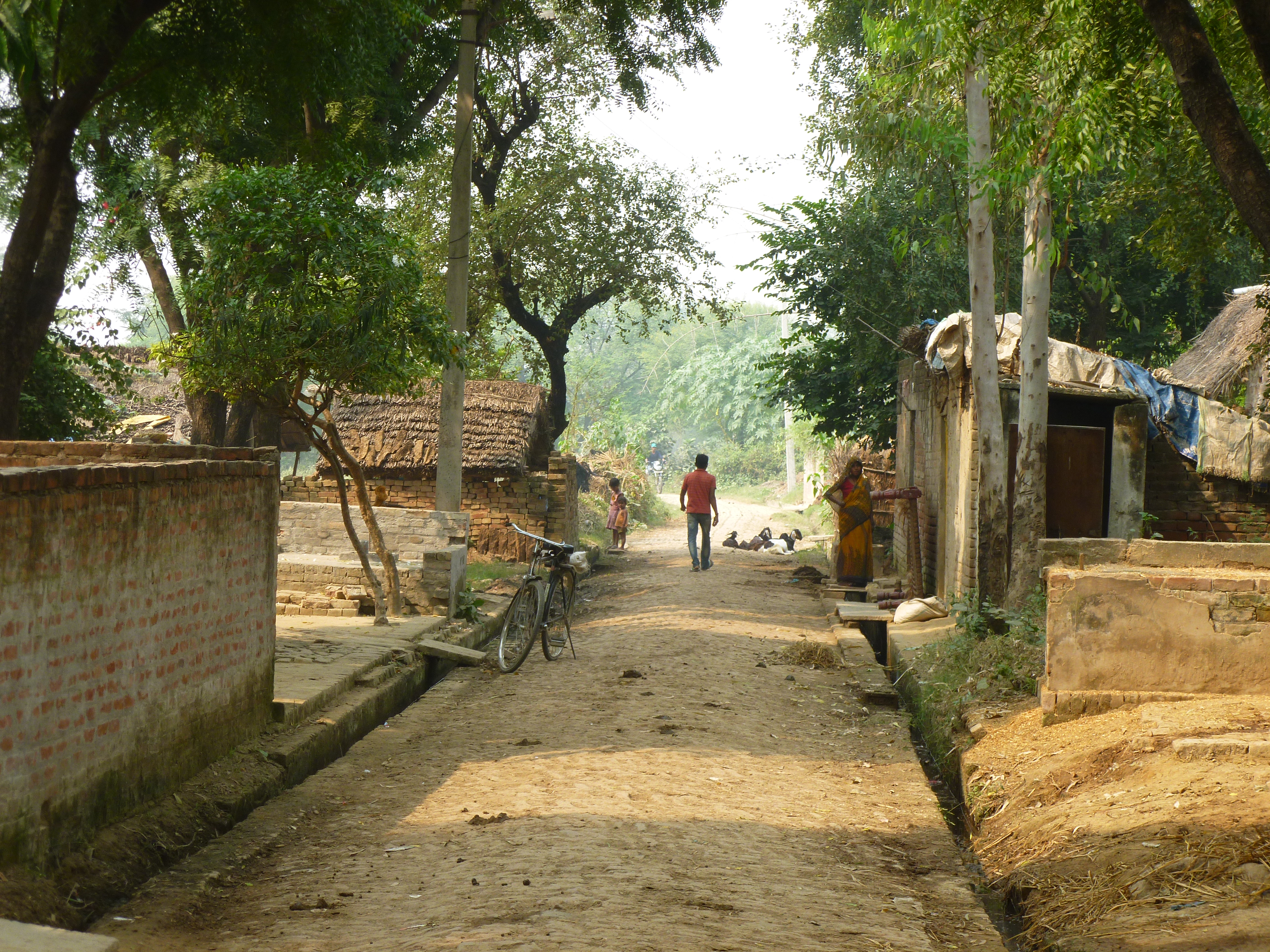- Authors: Dean Spears, Diane Coffey
- Published in: Foreign Policy
- Article link
Growth in India has always been puzzling. For the first decades of democratic India, economists lamented slow economic progress. Some observers worried that India was condemned to permanently sluggish GDP growth. Luckily, things changed. Rapid growth in the last few decades has taken many Indians out of poverty: According to the World Bank, the fraction of Indians living in poverty was cut in half between 1993 and 2011.
But slow growth of another sort remains a puzzle. These days, what grows too slowly is not India’s economy but its children. When a country gets richer, its children usually get taller. Indian kids remain unhealthily short, even compared with their peers in poorer developing countries. According to the latest figures, a child in India is more likely to be stunted than a child in much poorer areas of sub-Saharan Africa. They’re also dying in greater numbers than India’s level of development should suggest; infant mortality is higher in India than it is in poorer neighbors like Bangladesh and Nepal.
This presents a challenge for health economists, who are used to cases where richer societies are healthier societies. When we dug into the causes for our new book, Where India Goes, though, we found that the answer was unique to India. The damage being done to India’s children was caused by the grip of the caste system and the impact that it has on our most everyday human experience: defecation.
One of the most telling interviews we did was with Ritesh, a higher-caste man from the state of Uttar Pradesh. Like most people in rural India, he, his wife, and their children defecate in the open: Instead of using a toilet or latrine, they go outside, squat, and leave their feces behind. The family was offered a free latrine by the village leader, but Ritesh refused to accept it because he thought it would be unseemly to have in front of his house and that it would defile the small temple that he had set up to honor Lord Shiva and other gods. The view that a latrine, which people in other societies would see as leading to a cleaner home, could be defiling has its roots in ideas of purity and pollution that govern many aspects of daily life in rural India and that are used to justify caste-based discrimination.
The result of widespread open defecation in rural India is an environment full of fecal germs that get into food and water and onto children’s hands and feet. This leads to diarrhea, infections, and chronic intestinal diseases, which kill some children and prevent many of those who survive from absorbing and putting to good use the nutrients in the food that they eat. Children who live near more neighbors who defecate in the open are less likely to survive and are more likely to be stunted. In contrast, when a village’s sanitation improves, its children grow taller.
No children in the world face a density of open defecation as threatening as India’s, where, in many places, population growth has increased more quickly than the adoption of toilets and latrines. Open defecation has been essentially eliminated from Latin America and Bangladesh, is falling quickly in Nepal and elsewhere in Asia, and is much less common in sub-Saharan Africa than it is in India. Every year, Indians make up a greater and greater share of the remaining people who defecate in the open.
In open defecation, we found an important explanation for some of India’s health puzzles — but another question immediately arises. Why have Indians stuck to the fields, when people elsewhere, such as in neighboring Bangladesh, have rushed to adopt latrines? Our research team spent several years interviewing people in thousands of households across rural India. It became clear that the explanation was not that latrines were unaffordable. In a sense, we already knew this: After all, people in poorer countries make or buy latrines. The most basic form of rural sanitation, a covered hole in the ground, is not expensive.
Nor is the problem governance or lack of water. Governance in India is imperfect, but it is no worse than in Afghanistan, the Democratic Republic of the Congo, Haiti, Liberia, Myanmar, Pakistan, or Sierra Leone, all of which have less open defecation. And, in most places, water sources are closer and more reliable in rural India than they are in rural sub-Saharan Africa, which has lower rates of open defecation.
As we and the survey team visited village after village, unambiguous evidence came from a massive, uncontrolled experiment that successive governments have been unintentionally conducting for decades: giving away free latrines. We found many households where nobody uses the latrine that they were given; where a government latrine has been disassembled for parts; or where only older or disabled people use the latrine while others continue to defecate in the fields or on village paths.
Again and again, we and our team asked people in rural India why they defecate in the open and why they reject the latrines that the government gives away. We found that open defecation persists because of the ideas of purity and pollution that frame the caste system and because of the continuing legacy of untouchability.
Elsewhere around the developing world, when a latrine pit fills up after a few years of use, it gets emptied — either by its owners or by someone they hire. It is not the best job in the economy, but it is a job. But in rural India, emptying a latrine pit is much more than a job. Such work is wrapped up with the stigma of the lowest ranks of the caste system. People whose grandparents and parents used to clean up human feces, haul away animal carcasses, and do other types of dirty work belong to castes that were traditionally not allowed to use public wells or enter temples and who were forced to endure daily public humiliation.
Although social change is happening far too slowly in rural India, ever more people from oppressed castes now refuse to empty latrine pits or would charge very high prices to do so. As a result, rural Indians of higher caste rank worry that the latrines that the government gives away will quickly fill up and become unusable. Further, because accumulating feces in a latrine pit is a threat to the purity of the home, and because defecating in the open is seen as wholesome and healthy, most people see little reason to risk ever having to deal with a full latrine pit.
Once we pieced together this story from observations and interviews, we found it in quantitative data, too. It is not in the poorest, least educated, or worst governed villages or states of India where open defecation remains most common. It is in the places where most people are willing to tell a surveyor that they enforce the casteist rules of untouchability in their interactions with lower caste people. Indian Muslims, who have different ideas about purity, pollution, and propriety than Hindus, are more likely to use latrines. Open defecation in Muslim neighborhoods is so much lower than it is in Hindu neighborhoods that Muslim children are more likely to survive infancy, despite being poorer.
This explanation for rural India’s widespread open defecation can make people uncomfortable — especially development professionals. Of course, local rural development bureaucrats and politicians are rarely surprised by it; anyone who spends time in India’s villages knows that casteism too often remains alive and well. One time, a state official thanked us for putting into words an explanation that he, intuitively, already knew.
But in the distant offices and conference rooms of Delhi and among international development agencies, casteism and untouchability can feel as remote and foreign as the idea that a person with a working latrine would choose to defecate in the open. Casteism here is more subtle than the open discrimination of the villages — and not talked about by polite people. Invoking cultural ideas of caste as the internationally unusual explanation for an internationally unusual problem smells of the sort of social insensitivity that is unbecoming of a development career.
The current government’s sanitation drive, which began in 2014 and set the ambitious but impossible goal of eliminating open defecation by 2019, unfortunately does little to address the root causes of open defecation.
Indeed, it is the same sort of latrine construction program that prior governments have tried for decades. At a minimum, improving on prior programs would have required collecting careful data that tracks latrine use. Yet, more than halfway to the five-year deadline, the Indian government is not seriously measuring open defecation behavior; it mainly measures spending on latrine construction as money passes through local bureaucratic and political hands.
Sadly, there is every reason to expect that babies born in India in 2019 will keep dying because of the fecal germs spread by their neighbors. Even many of those who survive will suffer severe cognitive and physical damage from childhood diseases that could be stopped by the adoption of latrines. The caste system was built for the benefit of those on top — but the children of brahmins are as vulnerable to germs as the children of the lowest-ranking castes.
Photo credit: SAM PANTHAKY/AFP/Getty Images

